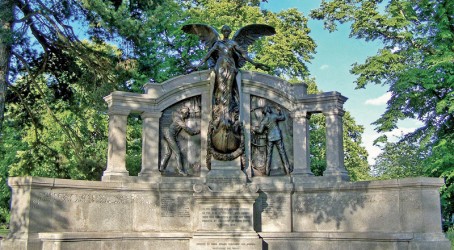Articles
Last month marked the 100th anniversary of the loss of the Titanic. On the ship’s maiden voyage from Southampton to New York, it collided with an iceberg and foundered, with more than 1,500 passengers and crew onboard. Among those who lost their lives on 15 April 1912 were three members of the Institution of Mechanical Engineers.
Thomas Andrews, the ship’s designer, became a member in 1902. He was born in County Down in 1873, and educated at the Royal Belfast Academical Institution. At the age of 16 he began a premium apprenticeship with Harland and Wolff in Belfast. He was initially appointed as one of the outside managers at the shipyard, but was soon given responsibility for the repair department.
He worked with some difficult cases, including the reconstruction of the steamship Paris, which had suffered such severe damage after running onto the Manacle Rocks off the Cornish coast that just docking it was a difficult operation. Andrews was subsequently given additional responsibilities for ship construction, and was involved with the building of large steamers for the White Star and other lines. By the time of his death, he had become managing director of the design department.
It was standard practice for a group of Harland and Wolff workers to travel on newly built ships’ maiden voyages to observe them in operation and advise on any necessary improvements, and it was in this capacity that Andrews was on the Titanic. Although some have criticised the design of the vessel, particularly that the watertight compartments in the hull were not watertight at the top, which allowed water to spill from one to another, safety was a primary concern in the ship’s design, and the Titanic incorporated several new safety features, including an additional inner hull, and the aforementioned, ultimately unsuccessful, watertight compartments. Andrews had also designed the ship to carry 64 lifeboats, which would have accommodated the full capacity of the vessel. Only 20 were specified by White Star Line, although this still exceeded the legal requirements.
The ship was built to the standards of the day, and many factors led to its loss. A 1996 investigation into the sinking by Gibbs and Cox, a naval architecture and marine engineering firm, concluded that, once the damage was sustained and 39,000 tonnes of water had entered, “no modern ship, not even a welded one, could have withstood the forces that the Titanic experienced during her break-up”.
Andrews did what he could following the impact, and once he realised that sinking was inevitable is said to have spent his remaining time encouraging passengers to board the lifeboats. He went down with the ship, and his behaviour was later described by survivors as “heroic unto death”.

Norman Harrison became an associate member of the institution in 1911. After attending the Northern Institute in his native Liverpool, he began a five-year apprenticeship with Higginson and Company in Liverpool. In 1894, he began working for Edler, Dempster and Company as fourth engineer, gradually moving up the ranks to become second engineer. He transferred to Ismay, Imrie and Company – owner of the White Star Line which operated the Titanic – in 1898, acting as third and second engineer on their large ships.
In January 1912, he was transferred from RMS Adriatic to serve on the Titanic. He was on this ship serving as assistant second engineer when it went down. He lost his life, along with the rest of the 25 engineers onboard.
William Edward Hipkins was elected as an IMechE member in 1898. He was born in 1858 and educated at the Birmingham Grammar School. He became an apprentice at the firm of his father, who was a machinist and engineers’ tool-maker, and later was appointed manager there. At the time of his death, he was manager of James Watt and Company’s Soho Foundry in Birmingham and managing director of W and T Avery, weighing machinists and engineers. He was travelling to America on business when he was lost with the Titanic.
- See our review of the new Titanic museum in Belfast